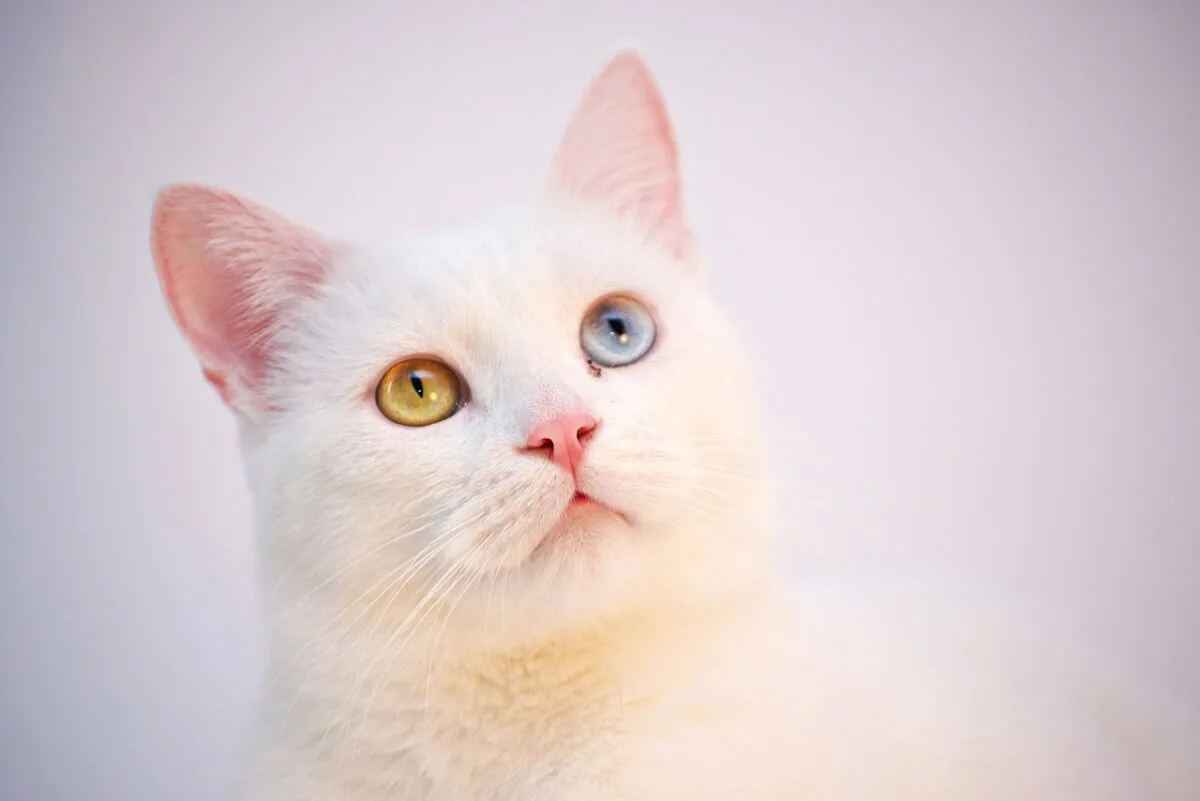This post is dedicated to the eye-catching Turkish Angora Cat.
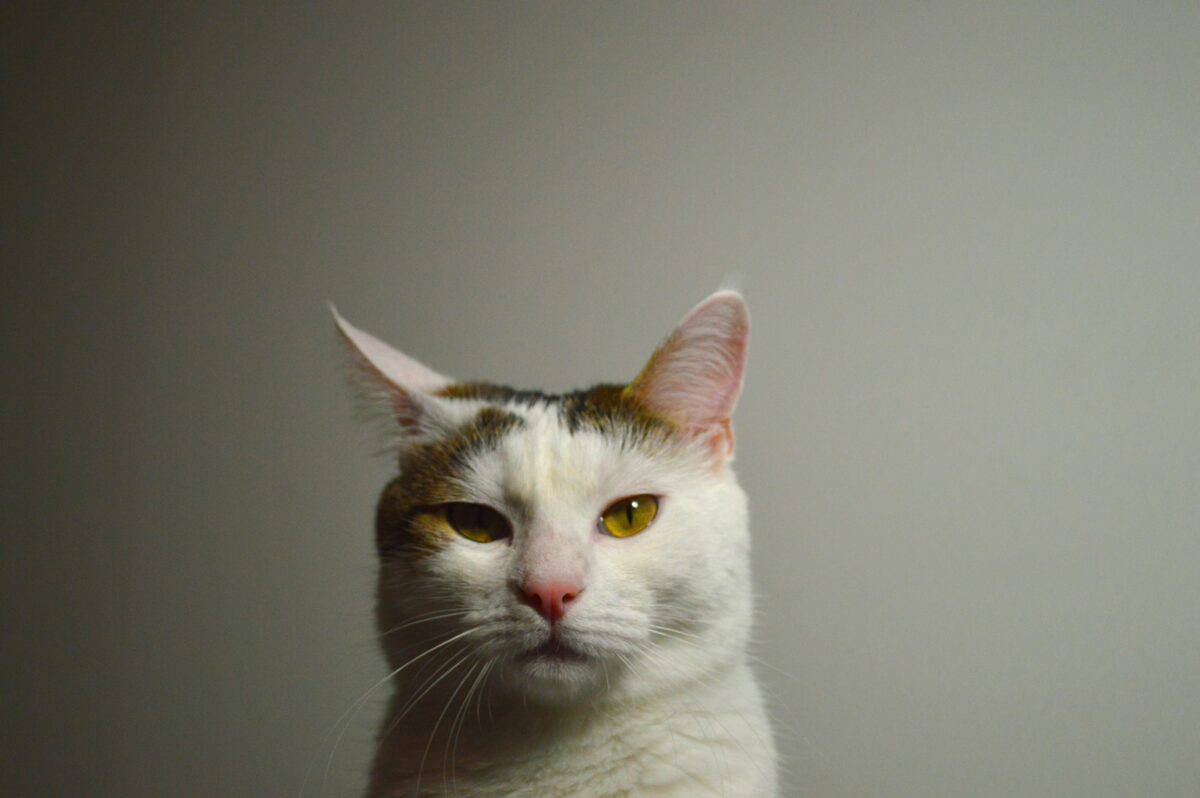
The Turkish Angora is a very old type of cat known for its long, fluffy fur and bright blue eyes. These cats were first bred in the mountainous regions of Central Turkey, where they were highly valued as show cats. However, nowadays, they are kept as pets in homes all around the world.
In addition to their stunning appearance, these cats make loyal friends. They can provide hours of entertainment through their playful antics and attentive nature. With proper care and nutrition, the Turkish Angora can live up to 15 years or more, providing its owners with years of love and companionship.
Let’s get to know this breed a little bit better.
Turkish Angora Origins
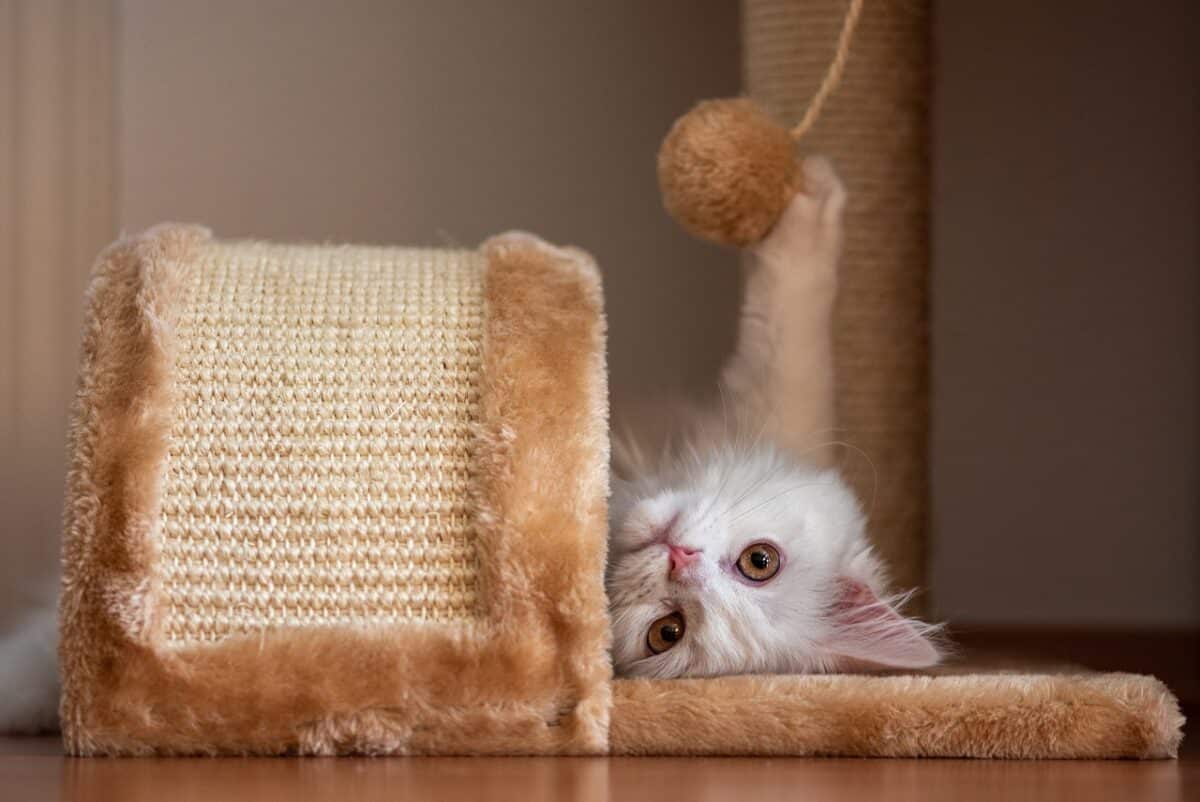
The Turkish Angora is a breed of cat that has been a part of Turkish culture for many centuries. It was one of the first cats to be domesticated and was highly valued in ancient times. The breed gained popularity in the late 19th century when Queen Victoria started breeding them for their beautiful coats.
Characteristics of the Breed
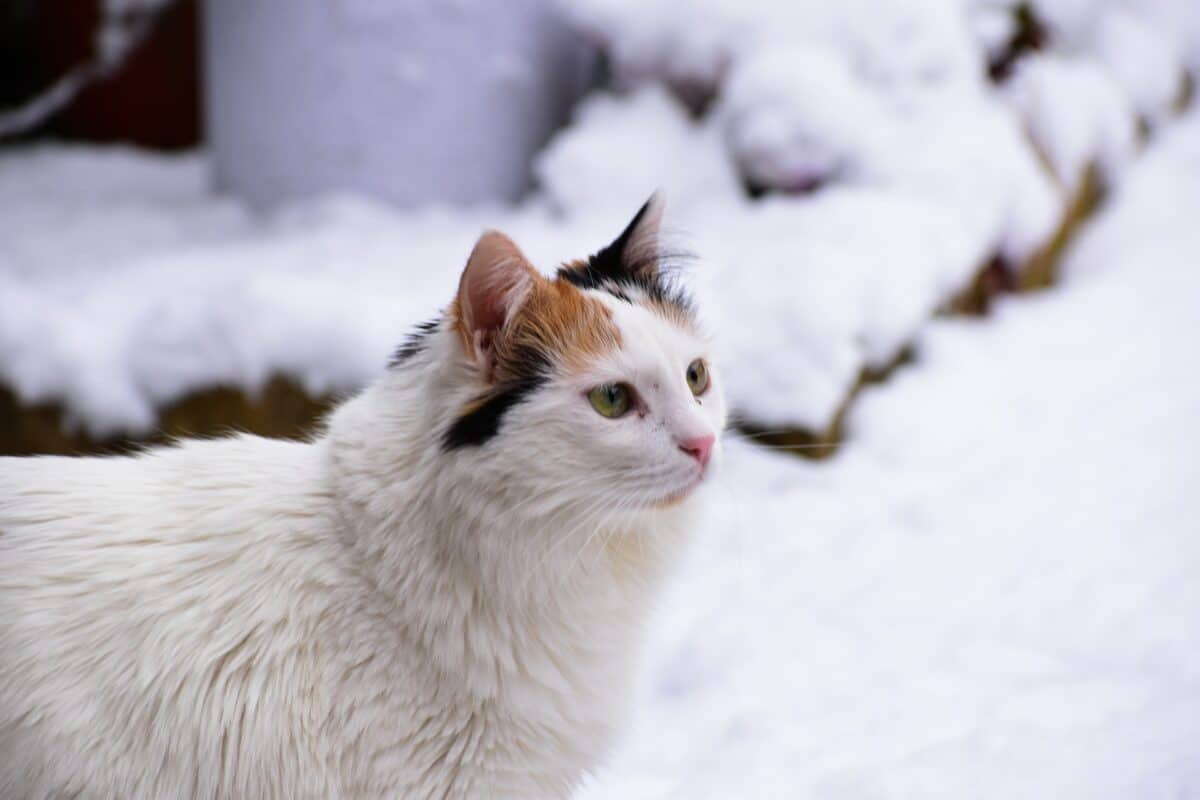
The Turkish Angora is an active cat that loves to explore and play with toys. It is very intelligent, quick to learn tricks, and can understand human speech easily. This breed is also affectionate and loyal towards its owner, often following them around or snuggling up next to them at night.
They have a silky soft coat in shades of white or cream with occasional spots or stripes on their back or face. The silky coats are medium to long but remain soft to the touch. This breed has no undercoat, and their fur may be slightly wavy when grown out.
Eyes, Ears, and Tail
Turkish Angoras have striking blue or greenish-blue eyes, which are complemented by their pink nose and lips. They have small triangular ears and an extra-long tail that helps them with balance while climbing trees or jumping on furniture. Their tails have fur that tapers from the base to the tip.
Size and Weight Range
In terms of size and weight, Turkish Angoras are medium-sized cats. Males typically weigh between 8-12 pounds, while females weigh between 6-10 pounds. They usually stand at a height of 10-14 inches at the shoulder, with legs proportionate to their body size.
Lifespan of a Turkish Angora
With proper care and nutrition, Turkish Angoras can live to be between 12-16 years old on average. Some individuals may even live up to 20 years with the necessary attention to grooming, exercise, diet, and health care.
General Personality Traits
The Turkish Angora is an intelligent and energetic breed with a sweet and curious nature. These cats are known to be quite vocal, with distinctive chirps and trills in addition to their traditional meowing. They tend to be independent thinkers and problem solvers, but at the same time, will happily accept instruction from their owners.
Activity Level In Adult Cats Vs. Kittens
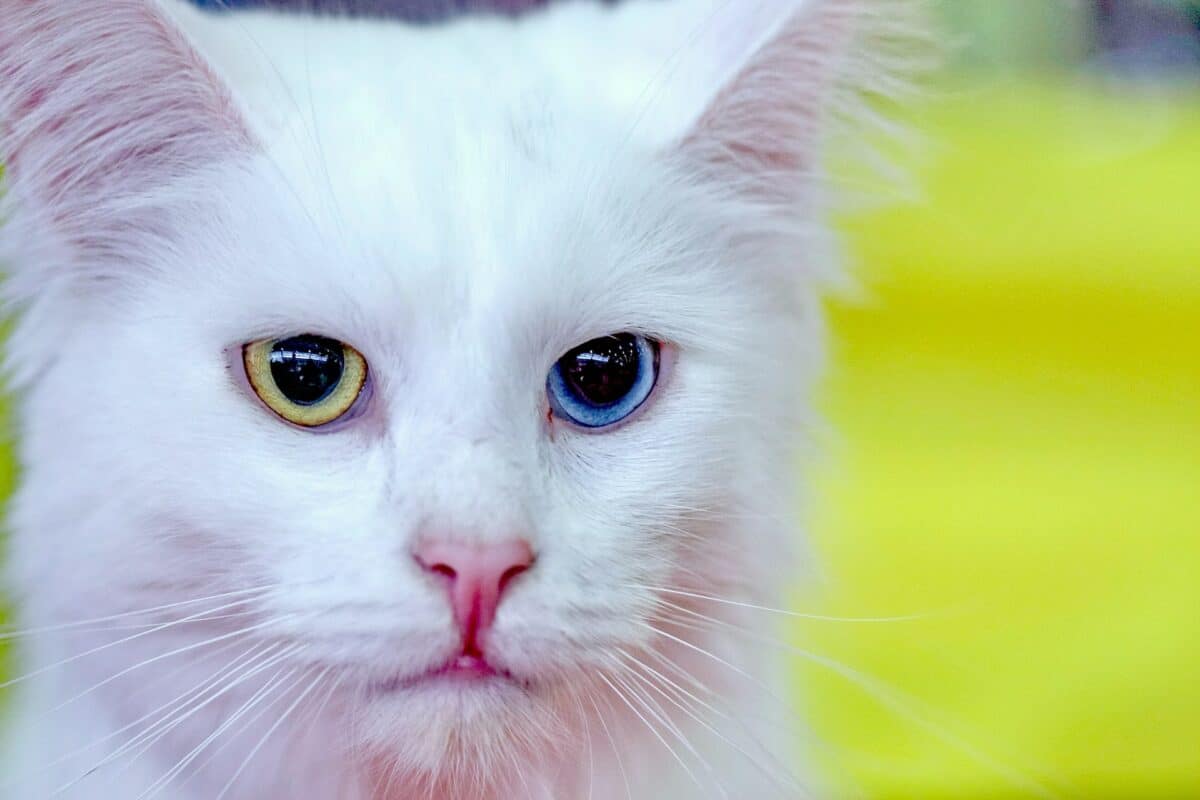
These cats have a moderate activity level throughout life, but kittens may be particularly active as they explore and play. Even adults enjoy playing games like fetch or hide-and-seek. Therefore, it’s important to ensure they get plenty of stimulation and interaction – both mental and physical – each day.
Diet
These cats have a very particular diet, much more diverse than other breeds. As strict carnivores, they typically eat a combination of wet and dry food supplemented with proteins like poultry and fish. They also absolutely love treats. Ensure to feed them enough nutrients to stay healthy and energetic.
On the other hand, they are prone to obesity if overfed. Consequently, it is important to measure their food according to the instructions on the product. A variety of safe fruits and vegetables can also be included in their diet, as well as boiled eggs or lean meat between meals to promote good dental hygiene. Knowing their dietary habits can ensure that your Turkish Angora has plenty of energy for play and remains healthy throughout their lives, increasing their lifespan.
How To Train a Turkish Angora Cat
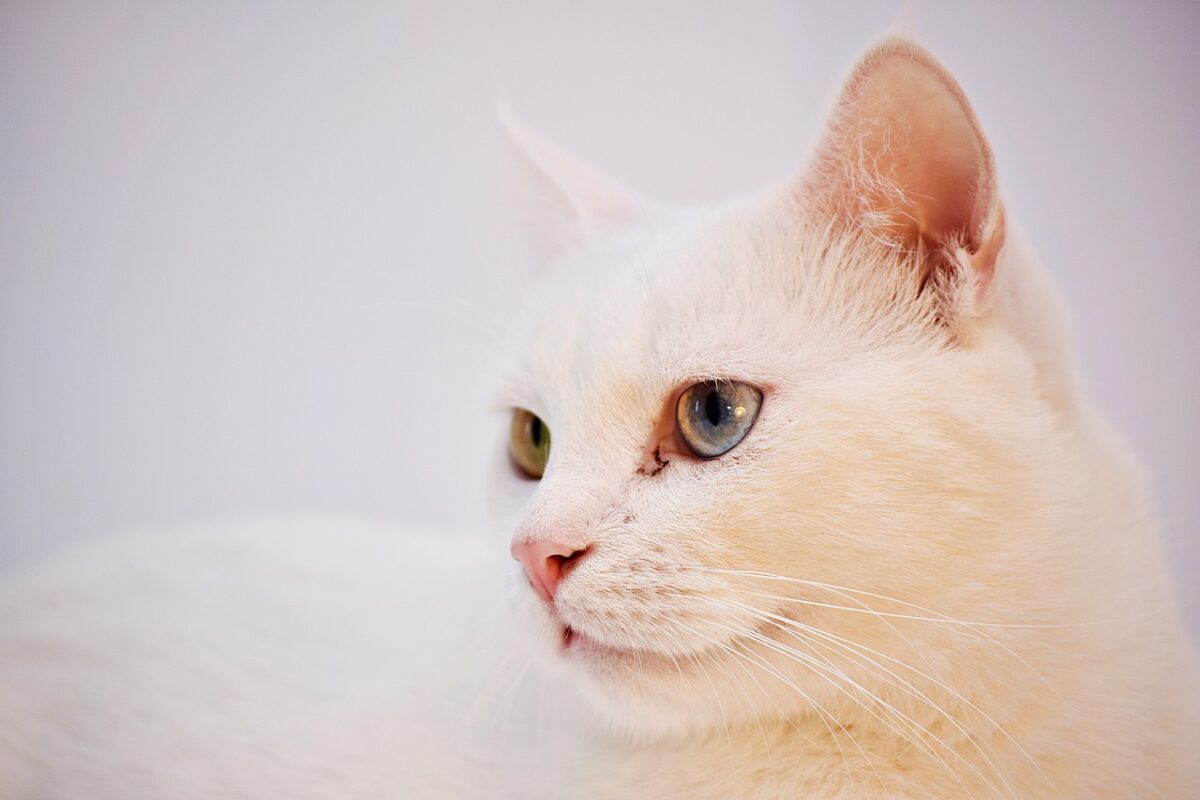
With their highly trainable nature, Turkish Angora cats can be taught various tricks or commands such as ‘sit,’ ‘come,’ or ‘fetch.’ Positive reinforcement is the best way to train these cats, using treats or verbal praise when they succeed at something rather than scolding them when they make mistakes. It’s also important not to overdo training sessions: keep them short and fun for the cat to remain engaged with the task at hand.
Special Considerations
When keeping a Turkish Angora cat as a pet, some special considerations should be followed:
- Firstly, these cats require daily grooming due to their long silky coats; therefore, owners must be prepared for regular brushing sessions and any trips needed for professional grooming services if required.
- Secondly, Turkish Angora cats require ample room for exploration – an indoor enclosure may help satisfy their active minds while keeping them safe at home.
- Finally, these cats need plenty of mental stimulation each day to stay healthy physically and emotionally; therefore, interactive toys or puzzle feeders should be provided to help keep them entertained.
Health Concerns
Some common health problems in this breed include polycystic kidney disease, hip dysplasia, and heart defects. They can also be more sensitive to environmental allergens than other breeds. Other issues in some individuals include retinal atrophy and hypertrophic cardiomyopathy (HCM).
Learn the Signs & Symptoms of Hypertrophic Cardiomyopathy (HCM) in cats.
Preventative Measures To Maintain Optimal Health
Turkish Angora needs proper nutrition and regular veterinary check-ups to ensure optimal health for your cat.
- Feeding high-quality food and avoiding table scraps will help prevent nutritional deficiencies.
- It’s also important to provide your cat with clean water and a well-maintained litter box to reduce the risk of urinary tract infections.
- Regular exercise will help keep them fit and active as they age, and yearly vaccinations and dewormings can protect against infectious diseases.
- Finally, providing plenty of mental stimulation through interactive play or puzzles will help keep them curious and engaged throughout their life!
Key Points
| Turkish Angora was originally bred in the highlands of Central Turkey as prized show cats, but today they can be found in homes worldwide. |
| The Turkish Angora is an active cat that loves to explore and play with toys. It is very intelligent, quick to learn tricks, and can understand human speech easily. |
| These cats have a very particular diet, much more diverse than other breeds. As strict carnivores, they typically eat a combination of wet and dry food supplemented with proteins like poultry and fish. |
| Turkish Angora cats require ample room for exploration – an indoor enclosure may help satisfy their active minds while keeping them safe at home. |
| They can also be more sensitive to environmental allergens than other breeds. Other issues in some individuals include retinal atrophy and hypertrophic cardiomyopathy (HCM). |
Conclusion
The Turkish Angora is a rare and beautiful breed of cat that offers an incomparable level of beauty, intelligence, and charm. While they need space to exercise their natural hunting instincts and may not be suitable for all households, these cats will surely bring years of love, fun, and companionship into any home. The Turkish Angora can become a beloved family member with proper care, patience, and dedication.
Thank you for reading this piece on the Turkish Angora! If you’re more of a dog person we’ve got you covered as well! Read our post on Wolf-like Dogs.
- Must-Watch: Eagle Flies Away with Full Grown Deer - April 8, 2024
- Hungry Hippos Eat Whole Pumpkins at Zoo - April 8, 2024
- Alaska Hikers Don’t Move an Inch When Bear Runs Past Them - April 8, 2024

